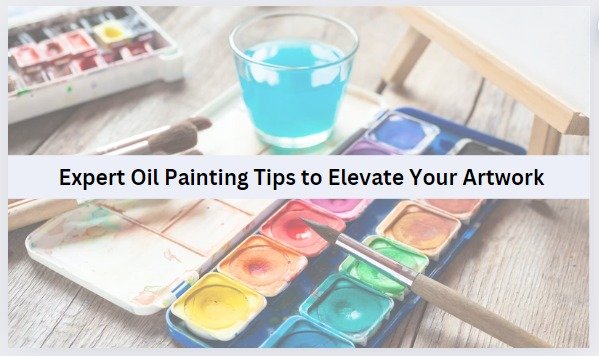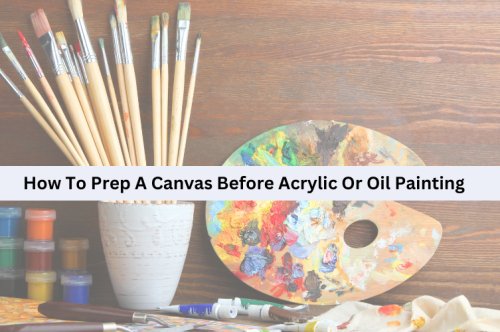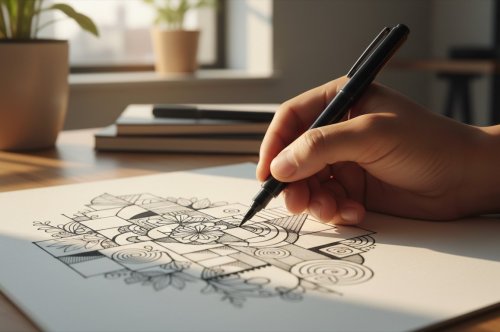Expert Oil Painting Tips to Elevate Your Artwork

Introduction
Painting/art mediums are varied. There is pencil shading, charcoal pencil, colored pencil, oil pastels, water color, acrylics and oil paints. But many factors make oil painting canvas exclusive from others. Be it their durability, vibrancy, rich textures, their ability to retain their original color, oil paintings are indeed one-of-a-kind painting medium. And if you are here, it simply means you are here to learn some oil painting tips. So, are you a beginner? Or are you an expert already and wish to get more tips to enhance your painting experience? Let’s just say you are at the right place! But before that, who am I to give you such tips?
I am an oil artist myself and have specialized myself in this field over the years. I maybe self-taught but the amount of knowledge I gathered is akin to any artist who have been to an art school. Art is all about experimenting and experience. The more you explore with techniques, outside the books the more you realize the vastness of the art world.
6 Oil Painting Tips to enhance your Artwork
I am going to share 6 oil painting tips and tricks for you to explore and enhance your oil painting artwork. Let’s dive into them:
Choosing the Right Materials
Having the right type of paint is very important. At the beginner level and for practicing purpose, you can use the student grade oil paint which are cheaper and have less pigment. But once you start painting seriously or let’s say you start painting for selling or gifting purpose, having the artist-quality paint is highly recommended. Artist-quality paint offers the best purity, highest pigment content and the widest range.
Brushes should be stiff and robust enough to move thick paints and withstand the many cleanings it will go through. Brush plays an important role in creating brushstrokes to create a variety of effects ranging from photorealism to abstract expressionism. The brush mark you create will set the mood of your painting and enable you to develop a style of your own.
Understanding Color Mixing
The second important oil painting tips for beginner which I personally recommend people to follow is the use of color theory to mix oil paints. Understanding color temperature and color bias wheel, is essential as that will affect the balance and mood of your work.
Layering and Texture
The most beautiful thing about oil painting is its ability to add depth and detail to your work. In oil painting, there is no limit to the number of layers you can add as long as the fat-over- lean method is followed. Oil painting layers help refine the painting, bringing in all the elements of the final image together. So, in order to enrich your experience with oil paints, try out the layering technique. I personally love layering and if you see my oil painting artworks, it involves a lot of layering. All you need to remember is to follow the fat over lean method.
In addition, adding texture to your work can give it an unusual and striking effects. You can use materials like saw dust, sand or chalk. You could even make the use of some coarse fabric to show imprints of different patterns and textures. After applying the texture, you can paint on top again to give that rich and finished look.
Working with Light and Shadow
Before learning about light and shadow, lets take a look at the term underpainting.
Underpainting is a term most commonly used for oil painting - to create a mood, to set a tone, and to set a base to give value and light to a painting. It is basically the first layer for all the subsequent layers to fall and create a sense of unity and harmony.
In short, underpainting is an important oil painting tips on canvas. It is done for a lot of purposes to achieve a lot of different things. To bring in a level of contrast, to enhance the areas of lightness and darkness or to render more depth to the painting, underpainting serves an array of benefits. From a sharp white canvas, underpainting changes the value of your canvas and makes it feel different.
Apart from the widely used burnt sienna, underpainting can be done using colors raw umber, ultramarine blue, burnt umber, red or yellow. The color choice varies from one artist to another and is largely a personal choice depending on how they want to set the proper values.
Using a lean paint mixture is ideal. Solvents like odorless mineral spirits or odorless turpentine oil are best. These mixtures will make the underpainting dry quickly, giving you the scope to paint over it without having to wait for a long time.
At the beginning stage, understanding how light or dark your subject is, is very essential. It is important to find the darkest darks and the lightest light. At the beginning after your underpainting, you can establish your dark values and shadows and then move on to add colors beginning with the furthest zone or background in the painting.
In case of shadow, observing the color temperature of the light source, the surface color, shape of the shadow, the value of the shadow are essential.
Proper Cleaning and Maintenance
There are a number of products available to clean oil brushes. They include solvents, natural cleaners, natural oils or soaps. Dip your brushes into any solvents, wipe out the excess paints with a tissue paper and then dip your brush into warm water and dish soap.
A fully varnished oil painting does not need much cleaning and maintenance. Light dust can be safely removed with a soft cloth or soft brush.
Seek Inspiration and Feedback
An important oil painting tips and tricks is to seek inspiration from people who work on the same style and genre. Share your work with them and ask for feedback. Learning is a never-ending process, and the more you learn oil painting and practice the better you will get at it.
Conclusion
Above everything else, practice is the key. Merely learning oil painting tips step by step is not enough. You need to make sure, you put in long hours of practice in order to bring out the best. What’s more, the more you practice, the more you will be able to discover your own unique style which will make your painting stand out from the others.




